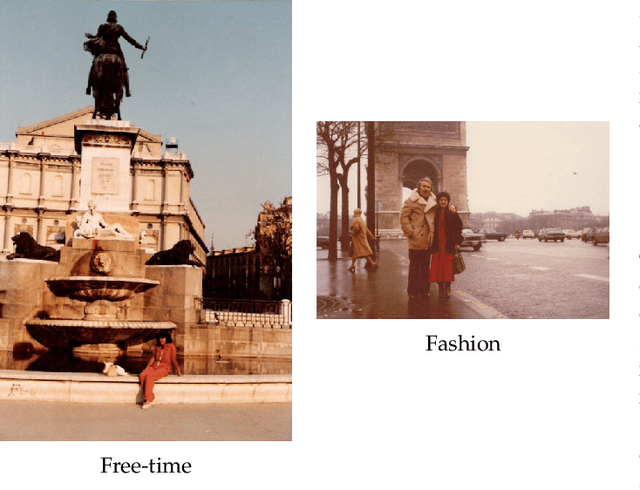Lorenzo Stacchio
Empathic Prompting: Non-Verbal Context Integration for Multimodal LLM Conversations
Oct 23, 2025Abstract:We present Empathic Prompting, a novel framework for multimodal human-AI interaction that enriches Large Language Model (LLM) conversations with implicit non-verbal context. The system integrates a commercial facial expression recognition service to capture users' emotional cues and embeds them as contextual signals during prompting. Unlike traditional multimodal interfaces, empathic prompting requires no explicit user control; instead, it unobtrusively augments textual input with affective information for conversational and smoothness alignment. The architecture is modular and scalable, allowing integration of additional non-verbal modules. We describe the system design, implemented through a locally deployed DeepSeek instance, and report a preliminary service and usability evaluation (N=5). Results show consistent integration of non-verbal input into coherent LLM outputs, with participants highlighting conversational fluidity. Beyond this proof of concept, empathic prompting points to applications in chatbot-mediated communication, particularly in domains like healthcare or education, where users' emotional signals are critical yet often opaque in verbal exchanges.
RELD: Regularization by Latent Diffusion Models for Image Restoration
Mar 28, 2025Abstract:In recent years, Diffusion Models have become the new state-of-the-art in deep generative modeling, ending the long-time dominance of Generative Adversarial Networks. Inspired by the Regularization by Denoising principle, we introduce an approach that integrates a Latent Diffusion Model, trained for the denoising task, into a variational framework using Half-Quadratic Splitting, exploiting its regularization properties. This approach, under appropriate conditions that can be easily met in various imaging applications, allows for reduced computational cost while achieving high-quality results. The proposed strategy, called Regularization by Latent Denoising (RELD), is then tested on a dataset of natural images, for image denoising, deblurring, and super-resolution tasks. The numerical experiments show that RELD is competitive with other state-of-the-art methods, particularly achieving remarkable results when evaluated using perceptual quality metrics.
IMAGO: A family photo album dataset for a socio-historical analysis of the twentieth century
Dec 03, 2020



Abstract:Although one of the most popular practices in photography since the end of the 19th century, an increase in scholarly interest in family photo albums dates back to the early 1980s. Such collections of photos may reveal sociological and historical insights regarding specific cultures and times. They are, however, in most cases scattered among private homes and only available on paper or photographic film, thus making their analysis by academics such as historians, social-cultural anthropologists and cultural theorists very cumbersome. In this paper, we analyze the IMAGO dataset including photos belonging to family albums assembled at the University of Bologna's Rimini campus since 2004. Following a deep learning-based approach, the IMAGO dataset has offered the opportunity of experimenting with photos taken between year 1845 and year 2009, with the goals of assessing the dates and the socio-historical contexts of the images, without use of any other sources of information. Exceeding our initial expectations, such analysis has revealed its merit not only in terms of the performance of the approach adopted in this work, but also in terms of the foreseeable implications and use for the benefit of socio-historical research. To the best of our knowledge, this is the first work that moves along this path in literature.
 Add to Chrome
Add to Chrome Add to Firefox
Add to Firefox Add to Edge
Add to Edge